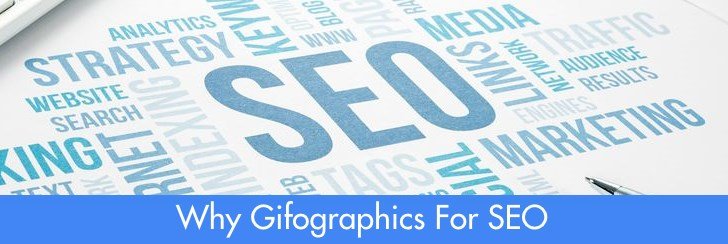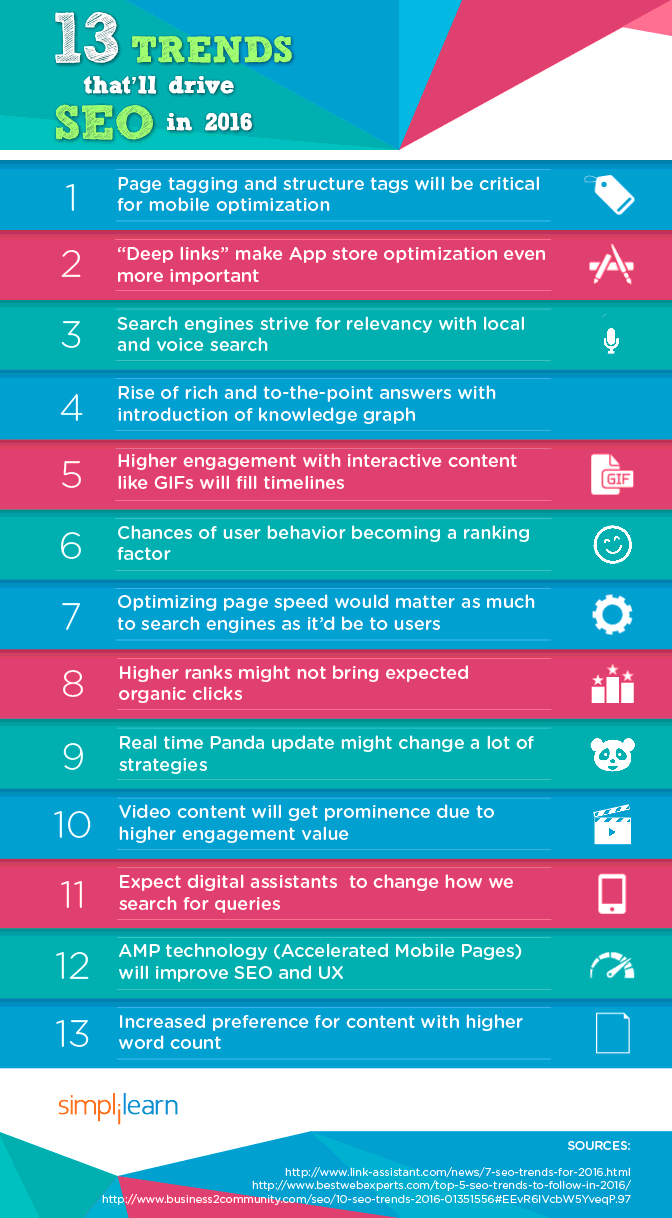
Information graphics or infographics have been used to visualize complex data and make difficult subjects more digestible, since the dawn of visual communication. Their popularity skyrocketed in recent years with the rise of social media. People love to share these visually enticing compilations of quirky statistics with friends and others online, and website owners and SEOs alike love the surge of incoming traffic. However, as Vladi Vasilev from Wealth Magnate points out, infographics are not as effective anymore as they used to be. They have simply been around a bit too long to still feel fresh and exciting.
That’s where gifographics come in. This new evolutionary step of traditional infographics blends GIF images with complex data to present information in a fluid, motion-driven format. If GIFs sound familiar to you, that’s probably because you stumble upon them on a daily basis. Each time you watch a funny, a few seconds long animation of a cat, you are watching a GIF (or Graphics Interchange Format) image.
Submitinme summarizes gifographics as unique, attention-grabbing, blend of information and graphics capable of driving more shares and traffic to websites and communicated complex ideas and brand images in an entertaining format. Let’s take a few minutes to illustrate how gifographics could help you achieve your goals and communicate with your visitors or customers and aid in your overall SEO success. Check out these reasons why Gifographics for SEO here!
Explain Complex Topics
Dr. Lynell Burmark, who works as an education consultant explains how “unless our words, concepts, ideas are hooked onto an image, they will go in one ear, sail through the brain, and go out the other ear.” He continues by adding that “Words are processed by our short-term memory where we can only retain about seven bits of information […] Images, on the other hand, go directly into long-term memory where they are indelibly etched.”
His explanation correlates with the known statistic from the Social Science Research Network that says that 65 percent of people are visual learners. What does this mean for gifographics and people who are interested in using them? It means that website owners and Internet marketers finally have a tool that allows them to get their audience on board without forcing them to get through long text and possibly forget most facts shortly after they are done with it.
A good example would be a company that came up with an innovative energy-saving solution and is now launching a Kickstarter campaign to turn it into an actual product. An explainer video can definitely grab the attention of viewers, but those without the necessary background knowledge and understanding could easily get lost in it. Text lets users learn what the product is all about at their own pace, but it cannot effectively engage potential customers. Gifographics can do both: engage and grab attention, while also explaining all key points in great detail.
Drive Traffic Through Social Sharing
According to Kissmetrics, visual content gets 94% more views than content without relevant images. When you also take into consideration that the average social media user views almost 300 pieces of content each day, the potential of gifographics for driving high-quality social media traffic becomes apparent.
Visitors coming from social media sites are much more likely to share the content with others, thus adding more fuel to the traffic acquisition circle. It often takes just a single viral post for a previously unknown brand to explode in popularity. Gifographics are the perfect tool how to get there, since a recent Buffer study found that animated content gets shared much more than its static counterpart.
Establish a Memorable Brand Image
Defining a brand image is a difficult task, and it’s even harder to drive this image into minds of potential customers and audiences from across the globe. In fact, most B2B marketers use 12-14 different types of content for their marketing campaigns. Those who have done their research also know that the human brain processes visual information about 60,000 times faster than it does textual information. They may also know that we remember only around 30% of what we read compared to 80% of what we do.
All this tells us one thing: gifographics are a fantastic way how to establish a memorable brand image and make it stick. Your animated explainer graphics can be designed to match your business or a particular product.
Write In-Depth Articles with Gifographics
As a part of Google’s constant effort to improve their search results page (or SERP) and offer users better results, the tech giant has introduced so-called in-depth articles, back in August 2013. According to their own description, “These results provide high-quality content to help you learn about or explore a subject.” They display on top of Google’s SERP and represent a powerful way how to drive traffic to your website.
An “in-depth article” has to be formally correct and usually, at least, 3000 words long. If you are already spending so much effort to create an amazing content, it might be a good idea to include a relevant gifographic. It will add another potential traffic source and increase the likelihood of being labeled as an “in-depth article”.
Conclusion
It’s inevitable that content marketing will continue to evolve in the future. Gifographics are the next big thing and those who want to rise above their competition should begin to think about various ways how they could incorporate animated explainer graphics into their overall marketing strategy. This article outlined the basics, and it’s your turn to leverage this new knowledge to your advantage.








